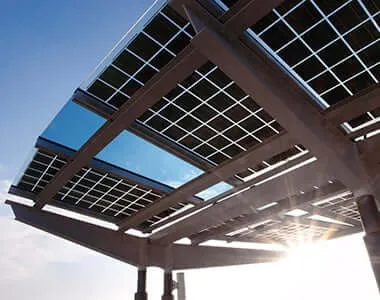Exploring the Advantages and Technology Behind Bifacial Solar Panels for Enhanced Energy Efficiency
The Rise of Bifacial Solar Panels A Sustainable Energy Solution
In the quest for sustainable energy solutions, solar power has emerged as a frontrunner, capturing an increasing share of the renewable energy market. As technology advances, one innovative solution gaining traction is bifacial solar panels. These panels represent a significant leap forward in solar energy efficiency and application, harnessing sunlight from both sides of the panel to maximize energy production.
The Rise of Bifacial Solar Panels A Sustainable Energy Solution
The efficiency of bifacial panels is influenced significantly by the albedo effect, which refers to the ability of a surface to reflect sunlight. Surfaces with high albedo, such as white sand or light-colored concrete, can significantly enhance the performance of bifacial panels. Consequently, their deployment in snow-prone areas or reflective sites can yield remarkable energy outputs, making them a versatile option for diverse geographical locations.
solarpanel bifacial

Another benefit of bifacial solar panels is their longevity and durability. Made with robust glass materials on both sides and typically featuring better degradation rates than standard panels, bifacial models tend to have longer operational lifespans. This durability translates to reduced maintenance costs and increased return on investment (ROI) over time, which is critical for both residential and commercial applications.
Moreover, the growing trend toward sustainability and reducing carbon footprints resonates well with the adoption of bifacial solar technology. As societies increasingly prioritize renewable energy sources to combat climate change, bifacial panels provide a compelling option that aligns with global sustainability goals. They not only contribute to energy generation but also enhance energy efficiency, thus playing a pivotal role in creating a more sustainable energy ecosystem.
Despite their advantages, it is essential to consider the installation and environmental conditions when adopting bifacial solar panels. While their performance can surpass that of traditional panels in optimal environments, factors such as shading, dirt accumulation, and installation angle must be meticulously planned to take full advantage of their capabilities. This requirement necessitates an informed approach to site selection and system design, ensuring that bifacial panels are installed in locations that maximize their efficiency.
In conclusion, bifacial solar panels represent a groundbreaking advancement in solar technology, showcasing the potential for increased energy production and sustainability. With their ability to harness sunlight from both sides and their enhanced durability, these panels are well positioned to become a staple in the renewable energy market. As we strive toward a cleaner, more sustainable future, the adoption of bifacial solar technology could play a crucial role in meeting the world's growing energy demands while minimizing environmental impact. As industries continue to evolve and innovate, embracing solutions like bifacial solar panels gives us hope for a brighter and greener tomorrow.
-
Understanding the Advantages of Solar String Inverters for Your Energy SystemNewsApr.29,2025
-
Choosing the Right PV Inverter: A Comprehensive GuideNewsApr.29,2025
-
The Future of Solar Power: Exploring Bifacial Solar PanelsNewsApr.29,2025
-
The Complete Guide to Solar Panels: Efficiency, Cost, And InstallationNewsApr.29,2025
-
The Best Options for Efficiency and Cost-EffectivenessNewsApr.29,2025
-
Harnessing the Power of Off-Grid Solar Inverters for Energy IndependenceNewsApr.29,2025







